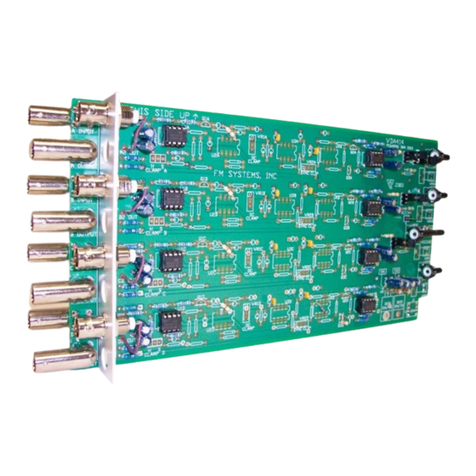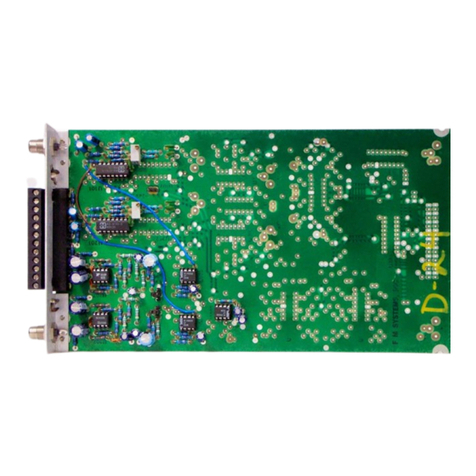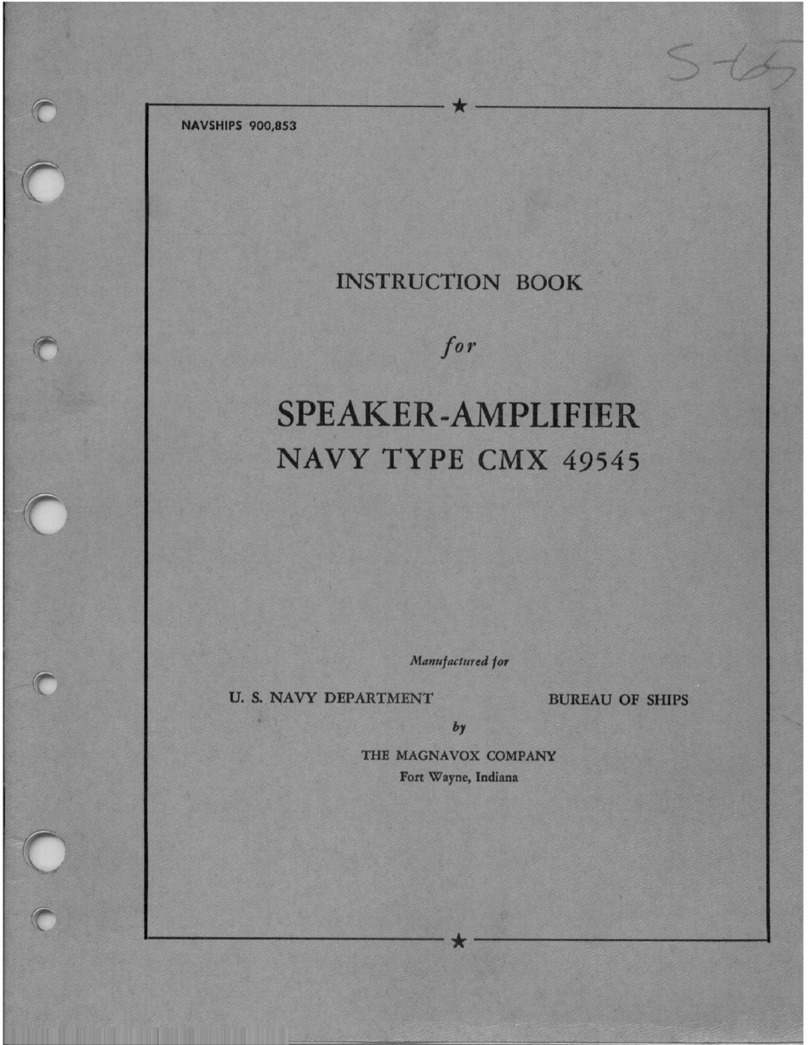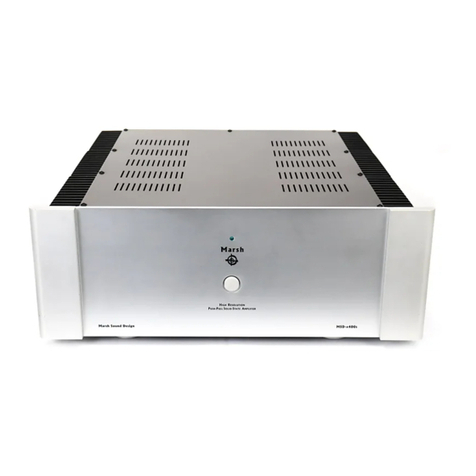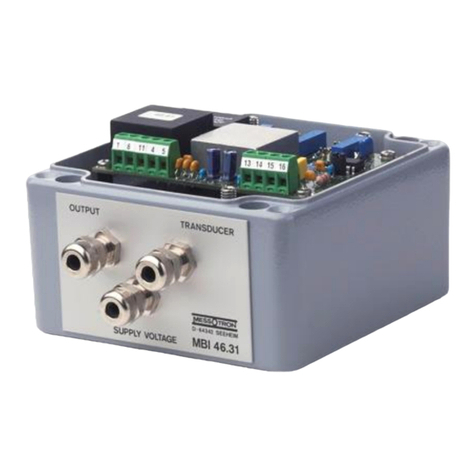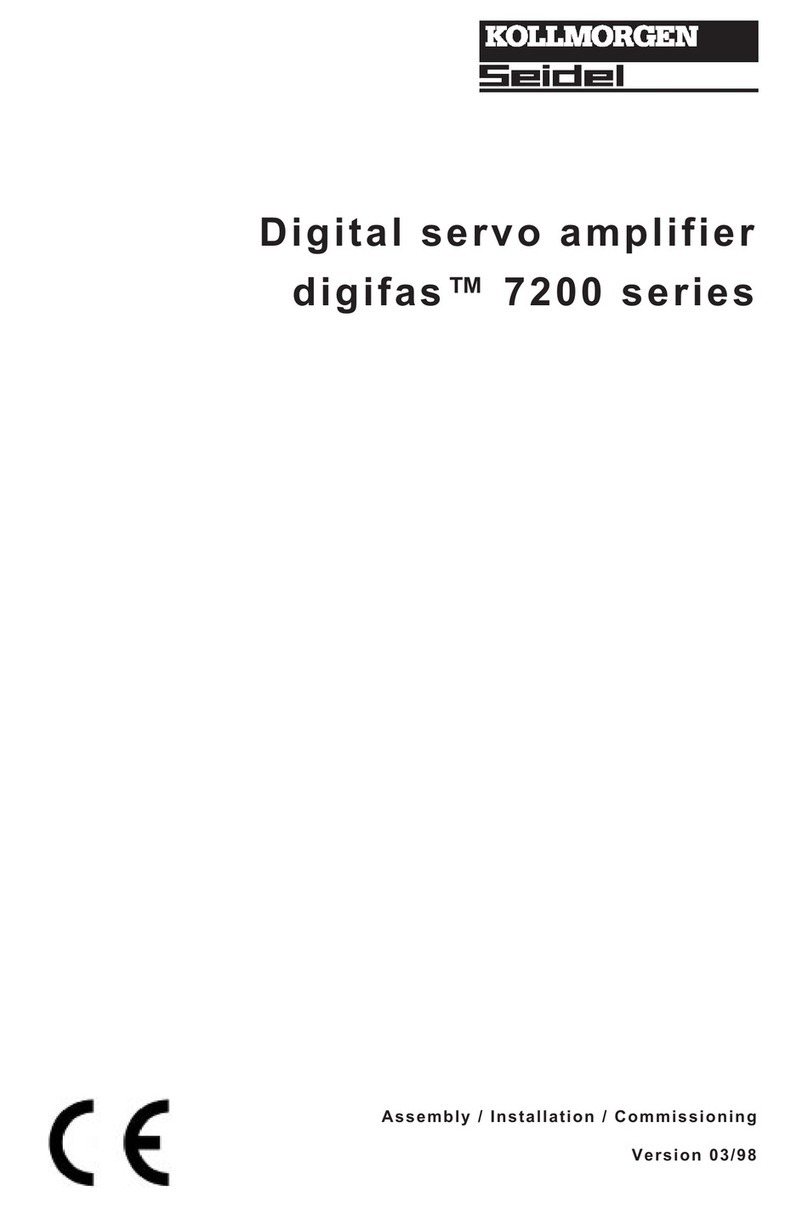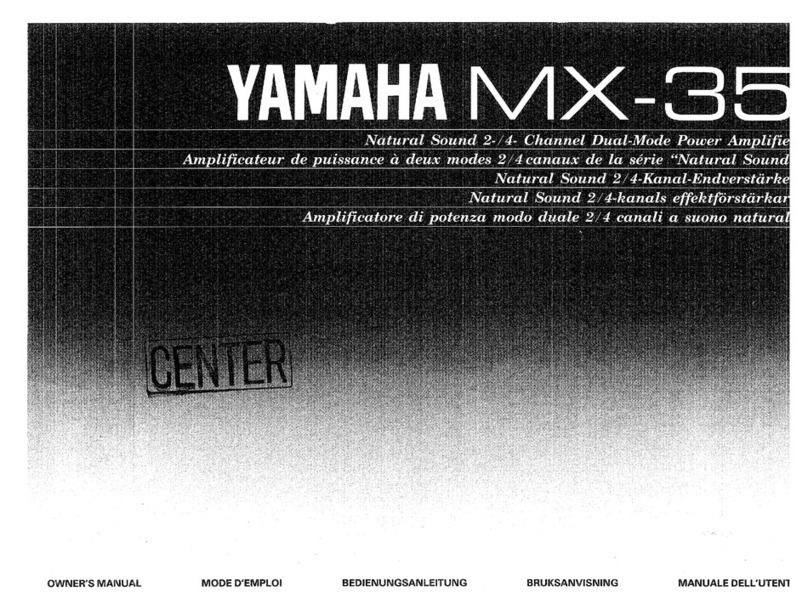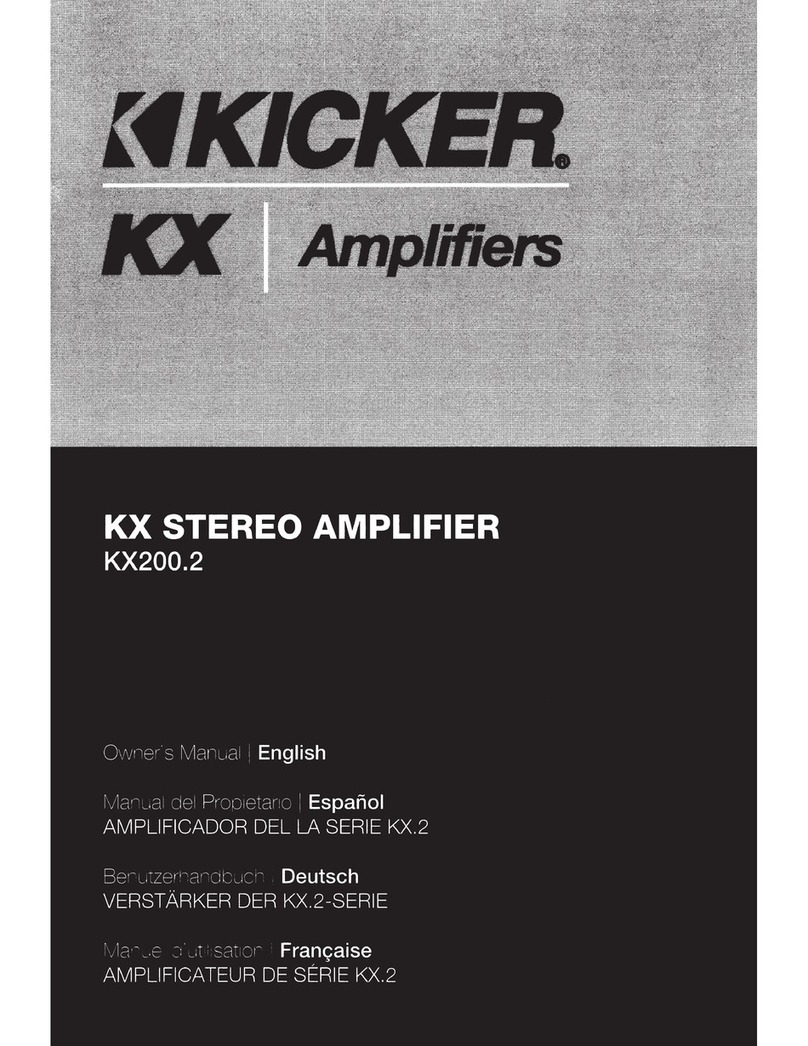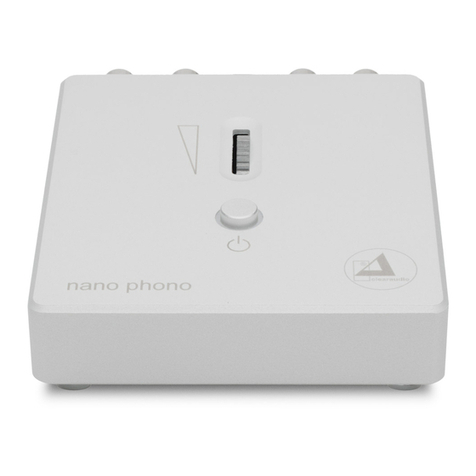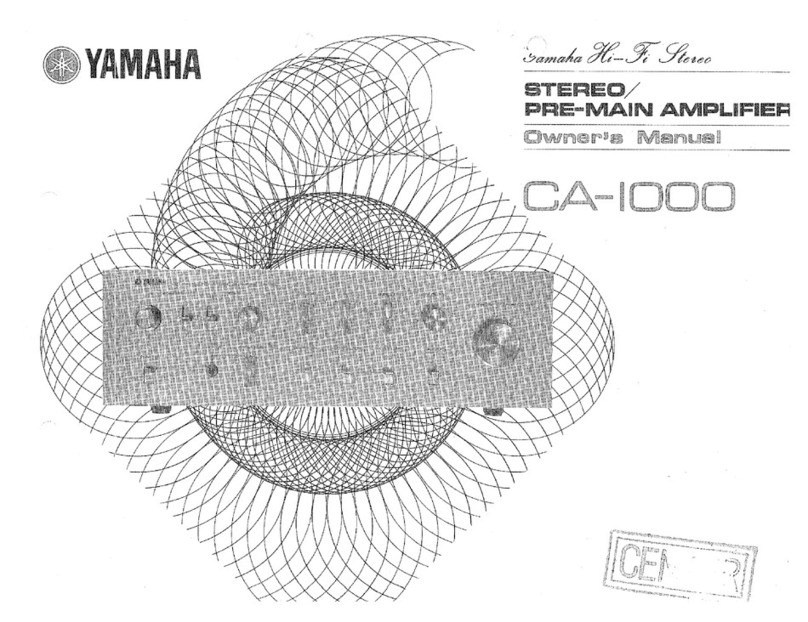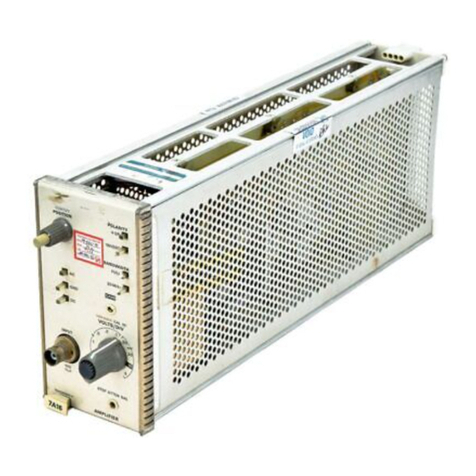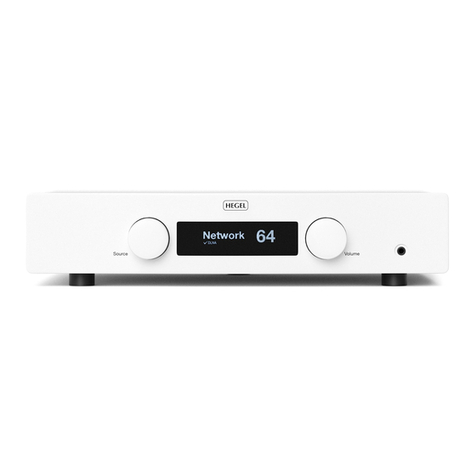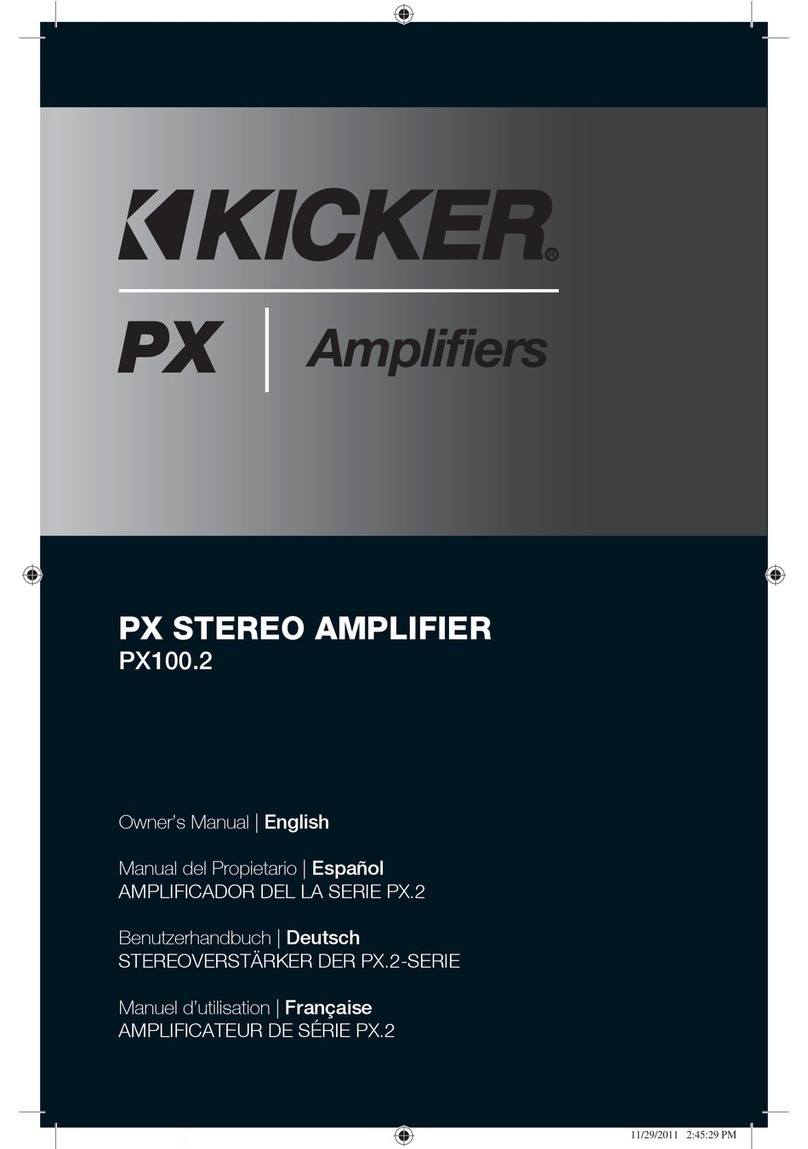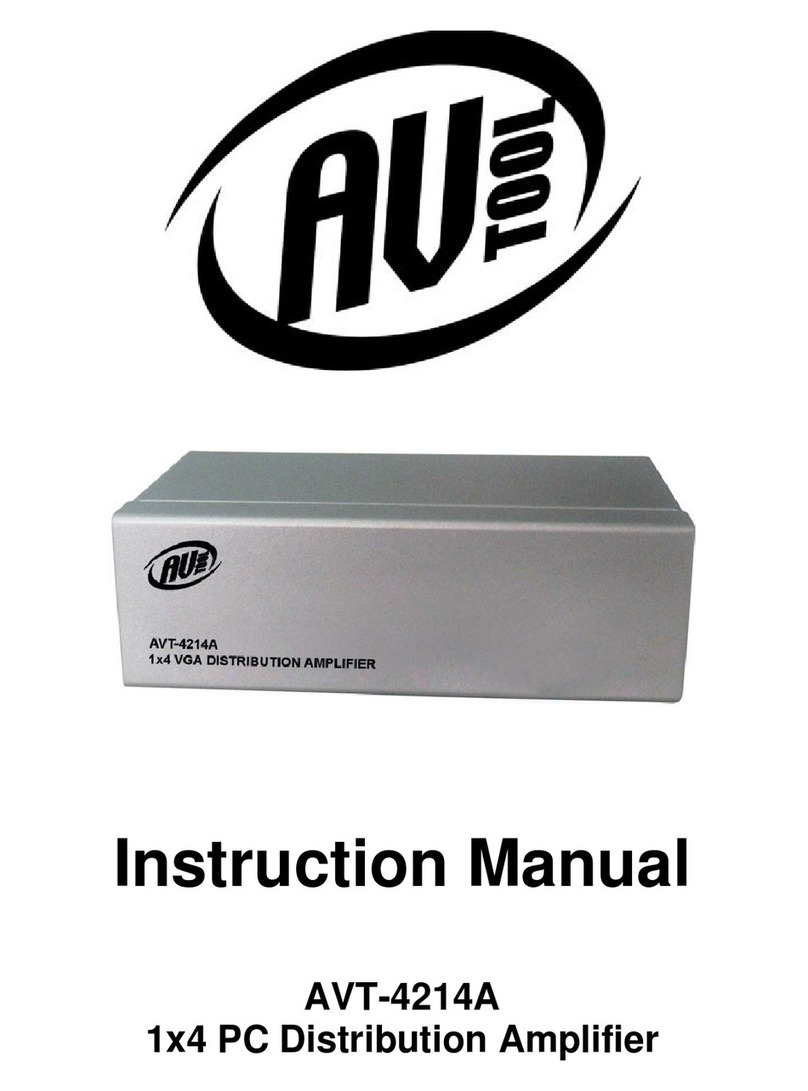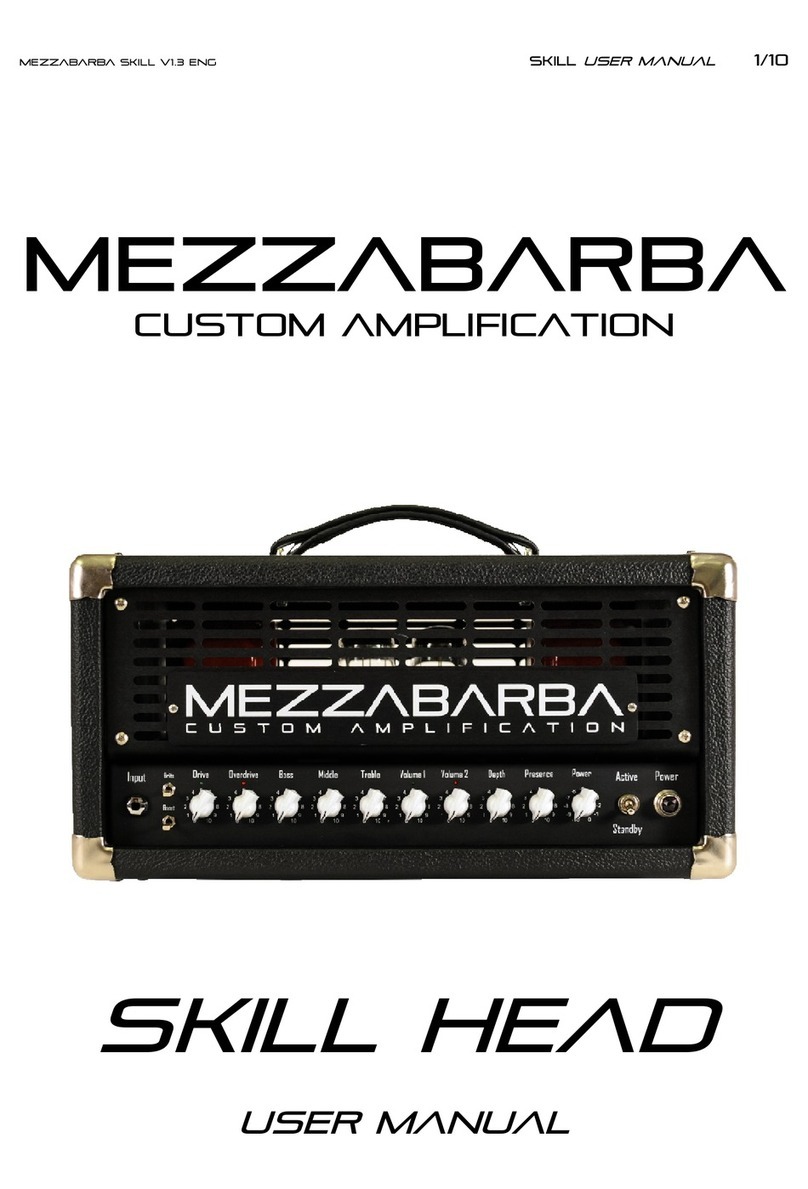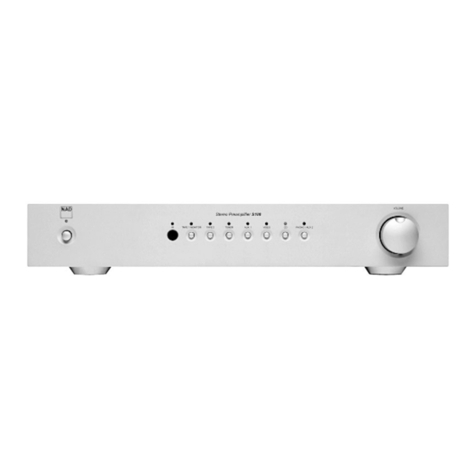FM Systems ACE472 User manual

ACE472
AUTOMATIC CABLE EQUALIZATION AMPLIFIER
INSTRUCTION MANUAL
IB 641402
COPYRIGHT
ALL RIGHTS RESERVED
8-10-2005

ACE472
TABLE OF CONTENTS
PAGE
SHIPPING INSPECTION 2
HOW AND WHERE TO MOUNT THE UNIT 2
MODUAL CARD INSTALLATION 2-3
HOW TO CABLE THE UNIT 3
POWER SUPPLY INSTALLATION 3
SET-UP OF THE UNIT 3
OPERATION 3-4
FRONT PANEL INDICATORS 4
BY-PASS PUSH BUTTON OPERATION 4
CARE AND MAINTENANCE OF THE ACE472 4
ACE472.ISB PAGE 1 OF 4

SHIPPING INSPECTION
Remove from shipping container and inspect for shipping
damage. The ACE472 is a Slide-in Card that fits into the RMS-400
Mainframe and Power Supply. The card is supplied with a retaining screw
(attached to the PC Board), a Front Label Designator and this
instruction book. If an RMS-400 Mainframe and Power Supply was purchased
with a ACE472 Card, the Card will be installed at the factory into the
Mainframe with labels attached and the retaining screw engaged and
locked.
HOW AND WHERE TO MOUNT THE UNIT
Select a position for the RMS-400 that is near the video
recorder, monitor or other equipment that needs video control. The
placement is not critical. Then install the ACE472 PC CARD in any unused
CARD SLOT that is empty. Follow the instructions for card installation,
be sure to remove the retaining screw on the front of the card and not
to apply excessive force to the card during installation.
MODULE CARD INSTALLATION
1. Select one of the un-used nine positions to be occupied by the new
circuit board module.
2. Remove the blank label in that position by peeling it off of the
front panel. Peel the label slowly to remove all of the label and
adhesive. Any remaining adhesive may be removed by rubbing the
surface with your thumb. WARNING: DO NOT USE SOLVENTS TO REMOVE THE
LABEL ADHESIVE. The solvent could damage the equipment cards or
cause a fire.
3. Peel the backing off of the new label and apply it to the front
panel of the RMS-400 rack in the position of the new card. Align
the new label with the screw head in the hole in the lower right
hand corner of the label, then align the center thumbscrew with the
clearance hole in the front panel. This should cause the label to
be straight and vertical. When the label is in place press firmly
the secure the label.
4. Then remove the thumb-screw retainer from the product card, it is
located at the front of the card and is removed by rotating the
knob counter-clock-wise.
5. Select any and all product options on the specific card.
6. Next slide the card into the card guides at the rear of the RMS-
400. Be sure that the notch in the circuit card is facing forward
and down. Push the card all the way to the front of the rack until
it stops. DO NOT APPLY EXCESSIVE FORCE TO THE CARD.
7. Insert the thumb-screw that was removed in step 4 while
rotating it in a clock-wise direction. When it begins to thread
into the card, continue until it is finger tight. CAUTION TIGHTEN
BY HAND ONLY, DO NOT USE TOOLS TO TIGHTEN THE THUMB-SCREW. OVER
TIGHTENING WILL DAMAGE THE CIRCUIT CARD.
8. Attach any cables or wires necessary for operation.
ACE472.ISB Page 2 of 4

MODULE CARD INSTALLATION (cont.)
Most circuit board modules have several adjustments which are
carefully factory set with precision instruments for optimum
performance. WARNING: DO NOT adjust any controls, some controls when
mis-adjusted produce little change under normal operating conditions,
but can seriously reduce the ability of the unit to function correctly
under other conditions which may be encountered.
HOW TO CABLE THE UNIT
The unit has two independent channels. All input, output, and
controls are marked with the suffix “A” or “B” depending on the channel
you are working with. This manual will describe the connection and
operation of the “A” channel. The “B” channel is connected and
operated exactly the same as the “A” channel.
Connect a BNC cable from your source video to the "VIDEO INPUT
A" of the ACE472 PC Card. The "VIDEO INPUT" is internally terminated
by a precision 75 Ohm termination to match standard video cable. The
ACE472-UTP connects to a CAT-5 twisted pair cable, and has a
105 Ohm Termination on screw terminals.
Next connect a BNC cable from the PRIMARY VIDEO OUTPUT
(A1)connector on the ACE472 to the equipment you wish to have controlled
video supplied to. There are two separate video outputs on each channel
so that two video circuits may be driven at once with the same video
signal. The "VIDEO OUTPUTS" of the ACE472 have a 75 Ohm output impedance
to match standard video cable. Be sure the equipment being driven is
properly terminated with a precision 75 Ohm termination to insure
correct video level. Failure to terminate the output cables with an
accurate 75 Ohm termination is the leading cause of incorrect video
output voltages.
POWER SUPPLY INSTALLATION
Power for the ACE472 is supplied by the RMS-400 Mainframe. It
supplies the card with +/- 12 VDC to power the card.
SET-UP OF THE UNIT
There are no adjustments or controls that have to be set at
installation. The ACE472 will now automatically control all video that
passes through it and maintain the proper levels as indicated in the
specifications.
OPERATION
The ACE472 is a base-band video processor that stabilizes video
levels, clamps out low frequency interference, and automatically
corrects Luminance and Chrominance levels on any length of cable
up to 5000 feet long. The ACE472 will control the following parameters
at the output:
ACE472.ISB Page 3 of 4

OPERATION (cont.)
1. White level is automatically gain-regulated to make the white
level (luminance) exactly 100 I.R.E. White level is not clipped
but retains a linear gray scale. Level is adjusted up as well as
down to keep the luminance level correct. Output video level is
regulated to 1 volt peak-to-peak.
2. Chrominance (color information) is automatically corrected, thus
compensating for cable slope losses up to 5000 feet and other
sources of high frequency attenuation.
3. Back Porch Clamping eliminates all incoming low frequency
interference such as 60 cycle ground loops, and also cancels low
frequency distortion in the video signal. Common Mode interference
is also eliminated.
Since ACE472 automatically processes sync and picture peak
voltages independently without altering the time relationships
within the video signal, the timing between SYNC and COLOR BURST is
not altered. Therefore horizontal Sync, Color Burst Timing, and
Chrominance Phase (SC/H) retain their original relationship. This
feature distinguishes the ACE472 from any Proc Amp that strips and
re-inserts new SYNC signals.
The ACE472 insures constant standard video signals even though
video from a multitude of variable level sources are used. This
helps to insure correct CCTV operation without loss of signal
due to over or under video level and improves overall picture
quality.
FRONT PANEL INDICATORS
A "VIDEO ON" indicator for each channel shows that a video signal
is present at that input to identify signal continuity.
BY-PASS PUSH BUTTON OPERATION
The ACE472 has a by-pass mode of operation. The switch on the front
panel is used to set the amplifier and equalizer to unity gain, (no
correction). With this push button you can make a quick comparison
between active control and no control. Use this button to see the
picture improvement gained by the ACE472. Look at the video image and
push the button, compare the before and after picture quality.
Depressing the by-pass button also enables the operator to examine
the picture without automatic correction, so that the action of the
camera iris controls may be observed, and if necessary, be adjusted.
CARE AND MAINTENANCE OF THE ACE472
Care should be taken not to subject the ACE472 to extreme
moisture or temperatures outside normal operating range. There are no
periodic maintenance adjustments to be made on the ACE472. If the unit
does not function properly it should be returned to the factory for
repair. There are no field adjustable controls.
ACE472.ISB PAGE 4 OF 4
Table of contents
Other FM Systems Amplifier manuals
